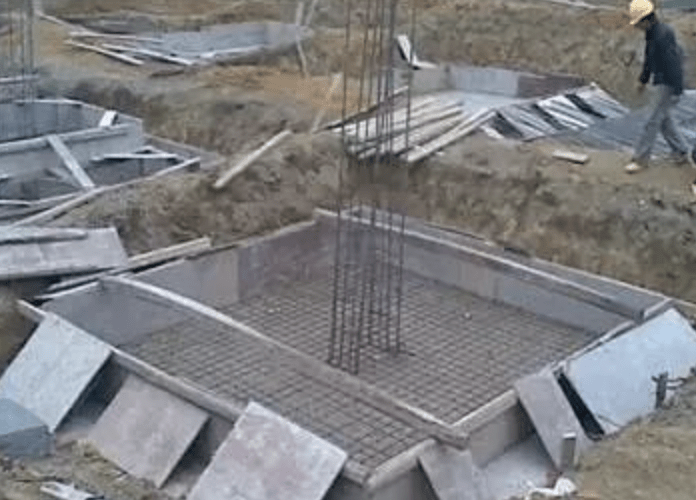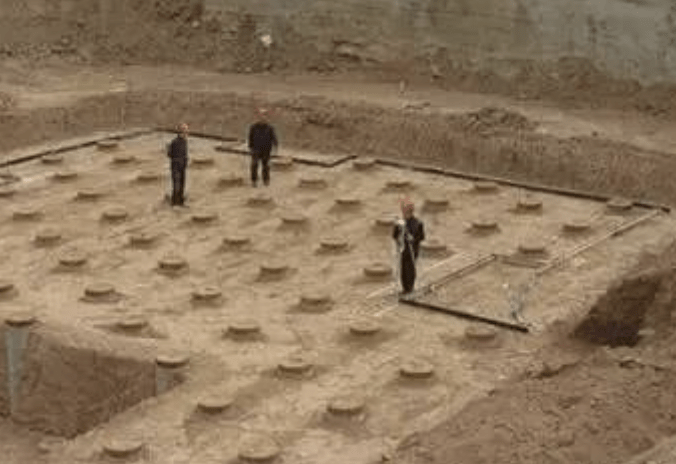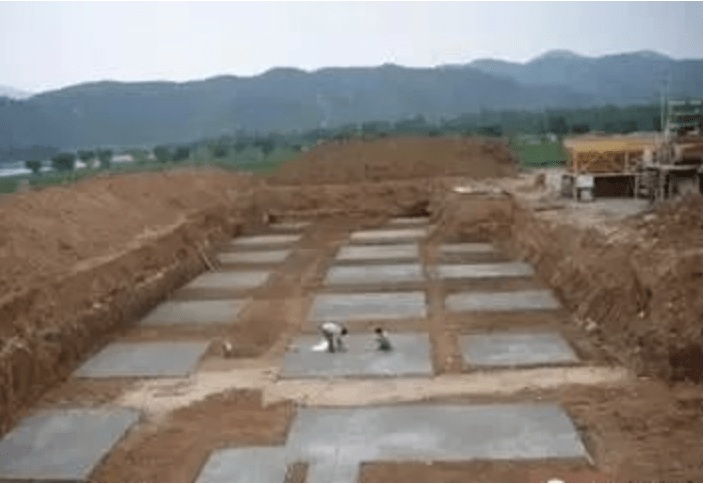Introduction
Isolated foundation construction is a critical phase in building structures, ensuring stability and load distribution. This guide details the construction process, key considerations, and quality control measures to achieve durable, code-compliant foundations.
Construction Process of Isolated Foundations
1. Site Preparation & Leveling
- Clearing the excavation: Remove loose soil and debris; ensure no water accumulation.
- Leveling: Establish the foundation’s base elevation per design specs using surveying tools.
2. Blinding Layer (C10 Concrete)
- Pour a C10 fine aggregate concrete layer post soil inspection. Compact thoroughly for a flat surface to protect reinforcement.
3. Survey & Marking
- Use a total station to mark centerlines and control lines for precise foundation positioning.
4. Rebar Work
- Begin after the blinding layer reaches 1.2MPa strength. Key steps:
- Tie bars at 45° angles for column starters.
- Place spacer blocks (≤100mm gaps) to maintain concrete cover.
- For bases ≥2.5m, cut rebar to 90% of length and stagger placement.
5. Formwork Installation
- Use steel or timber molds reinforced with pipes/wooden supports. For stepped foundations, install tiers from the base upward.
6. Concrete Pouring
- Layered placement: Max 2-hour intervals to prevent cold joints.
- Fix rebar with an initial 5–10cm layer.
- For tiered foundations, pause 30 minutes between layers to settle.
- Monitor formwork stability during pouring.
7. Compaction & Finishing
- Vibrate with immersion rollers (spaced ≤1.25x rod length) to eliminate air pockets.
- Screed and trowel the surface; verify levelness before curing.
8. Curing & Formwork Removal
- Cure for 7+ days (14+ for specialty mixes) under wet covers.
- Demolding: Only after the concrete hardens sufficiently to prevent edge damage.
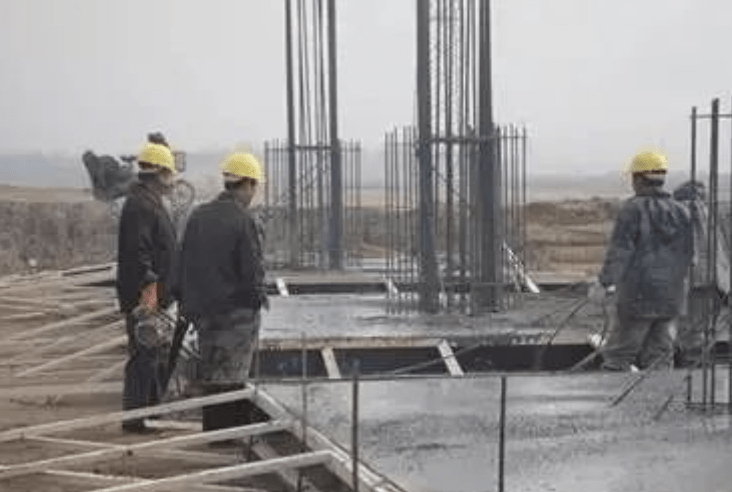

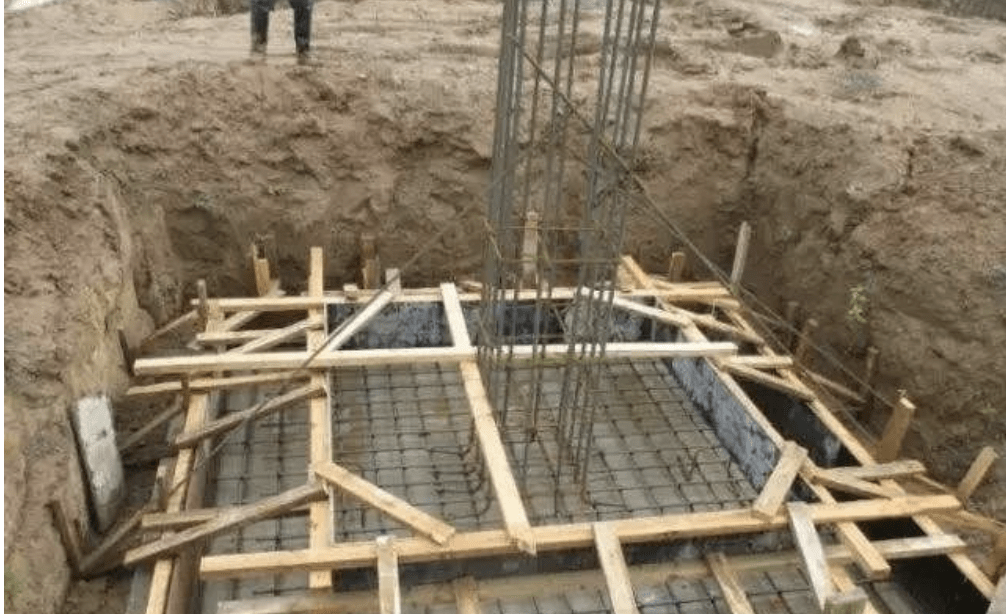
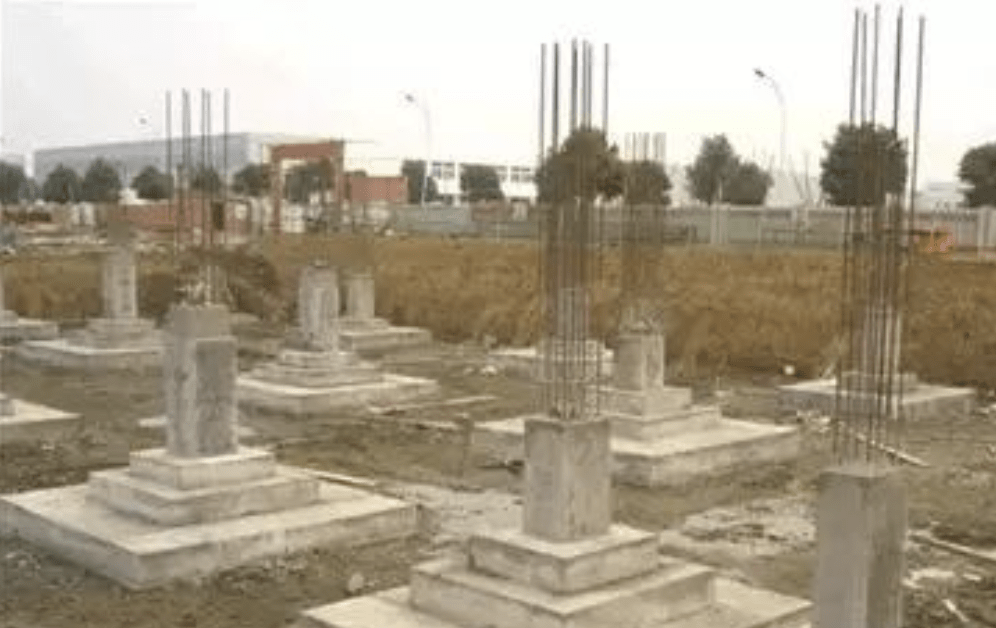
Key Construction Tips
A. Rebar & Grade Beam Best Practices
- Rebar: Double-layer spacing requires 25mm separators. Lap joints need wire binding at the ends.
- Grade beams: Stagger stirrup ties; maintain 30mm top-bar spacing for concrete flow.
B. Concrete Work
- Avoid defects: Prevent honeycombing by vibrating each layer (≤50cm thick).
- Sloped bases: Under 30°? Use wire mesh to retain concrete; over 30°? Install bolted formwork.
C. Quality Pitfalls & Fixes
- Waterproofing Failures: Use mesh-reinforced mortar or sand-coated membranes for side protection.
- Excavation Errors: Verify dimensions via control points; manually trim machine-dug bases.
- Backfill Issues: Layer and compact soil/gravel (test density per layer). Avoid organic/frozen fill.
- Curing Cracks: Cover concrete within 12 hours; extend curing in dry/hot conditions.
Foundation Inspection Checklist
Pre-Acceptance Requirements
✅ All voids/pipe penetrations sealed and inspected.
✅ Formwork removed; concrete defects repaired.
✅ Control lines and elevation markers are visible.
✅ Test reports (soil, concrete, rebar) comply with standards.
✅ Utility conduits pressure-tested and approved.
Post-Construction Tests
- Load tests: Verify bearing capacity.
- Thermal imaging: Detect voids or weak zones.

